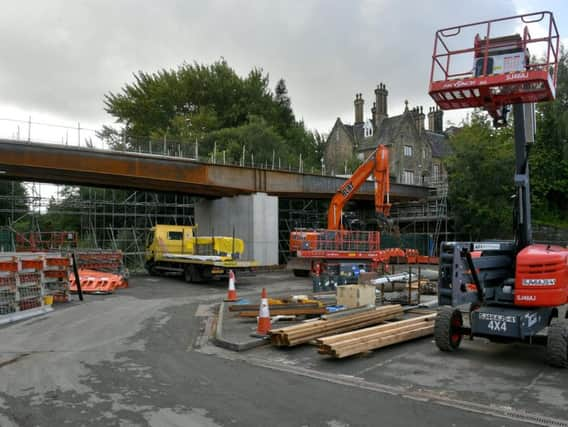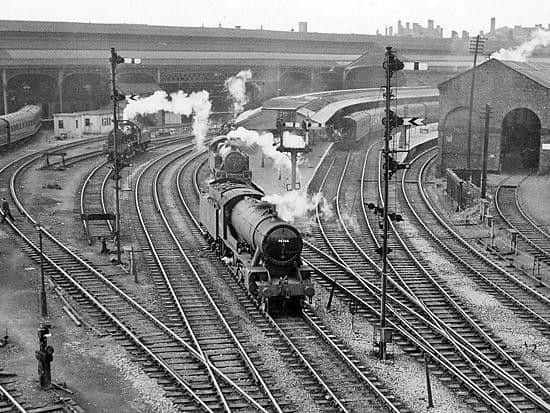How new East Cliff bridge will realise a long-held ambition for Preston


The bridge, under construction in East Cliff, replaces the recently demolished Bailey Bridge and will be where Vicars Bridge stood until 2013.
It is to be a vehicle and pedestrian bridge which runs over an old railway line and has extra capacity for weight bearing.
Advertisement
Hide AdAdvertisement
Hide AdThe new bridge, which does not have a name yet, is part of the wider development which includes the former Park Hotel by the Lancashire County Pension Fund.


A spokesman for Lancashire County Council (LCC) said: “Work by the contractor on the new bridge is progressing well, with work taking place to install the steelwork.
“The new bridge is part of the redevelopment of the prominent East Cliff site including the former Park Hotel by the Lancashire County Pension Fund.
“The replacement of the bridge supports the wider redevelopment of this site, and will help to unlock the long-standing ambition for a cycle link between the park and railway station to support active travel opportunities into the city centre.”
Advertisement
Hide AdAdvertisement
Hide AdThe bridge will connect Avenham and Miller Parks and South Ribble to Preston Railway Station and the city centre.
Plans for the subsequent cycle link in the early stages but any future cycle path would run underneath the bridge in East Cliff.Meanwhile the bridge is also seen as helping to unlock the future of the development of the former Park Hotel, ultimately restoring it to its former glory.
Two of Preston’s longest-established companies are spearheading the plans to revive the former Victorian railway hotel.
Cassidy and Ashton and Frank Whittle Partnership (FWP) have collaborated to restore what were county council offices back into a 156 bedroom four-star hotel, as well as the addition of a new spa, banqueting pavilion and offices.
Advertisement
Hide AdAdvertisement
Hide AdAlban Cassidy, director at Cassidy + Ashton, said: “We are as excited as anyone to see the replacement New Vicar’s Bridge well under construction, as it will not only restore the original access to Cassidy + Ashton’s Preston office, but more importantly facilitate the project to convert the former East Cliff Offices back to a hotel which will be huge asset to the area.
“As part of this project, the final spur from the Guild Wheel cycle path to the railway station will also be completed, opening up an alternative means of access to and from the park and Guild Wheel without reliance on private cars.”
The bridge is due to be in place in January 2020 with work on the hotel starting once the bridge is completed.
History and future of Park Hotel
The 3.3 acre complex was first opened in 1882 as the grandly titled London and North Western and Lancashire and Yorkshire Hotel with subways connecting guests and passengers directly to the platforms of Preston railway station.
Advertisement
Hide AdAdvertisement
Hide AdThe Park Hotel was acquired from LCC in 2016 and the significance of the project lies in the need for Preston to show ambition and provide modern luxury hotel facilities as well as retaining its historic assets.
The investment from the county’s pension fund in Preston is seen as a real statement of intent for the city and the county and the reinstatement of a four star hotel proves there is ambition to drive the city’s economy deep into the 21st century.
In addition to restoring the main buildings of the Park, the plans aim to demolish the neighbouring concrete office building to be replaced with a building housing more bedrooms, conference facilities, a lounge bar and gym.
A 500-seat banqueting pavilion overlooking Miller Park adds to the leisure provision of the scheme and neighbouring Grade 2 listed houses are being converted from offices to a spa with treatment and relaxation rooms, manicure and pedicure areas and dining.